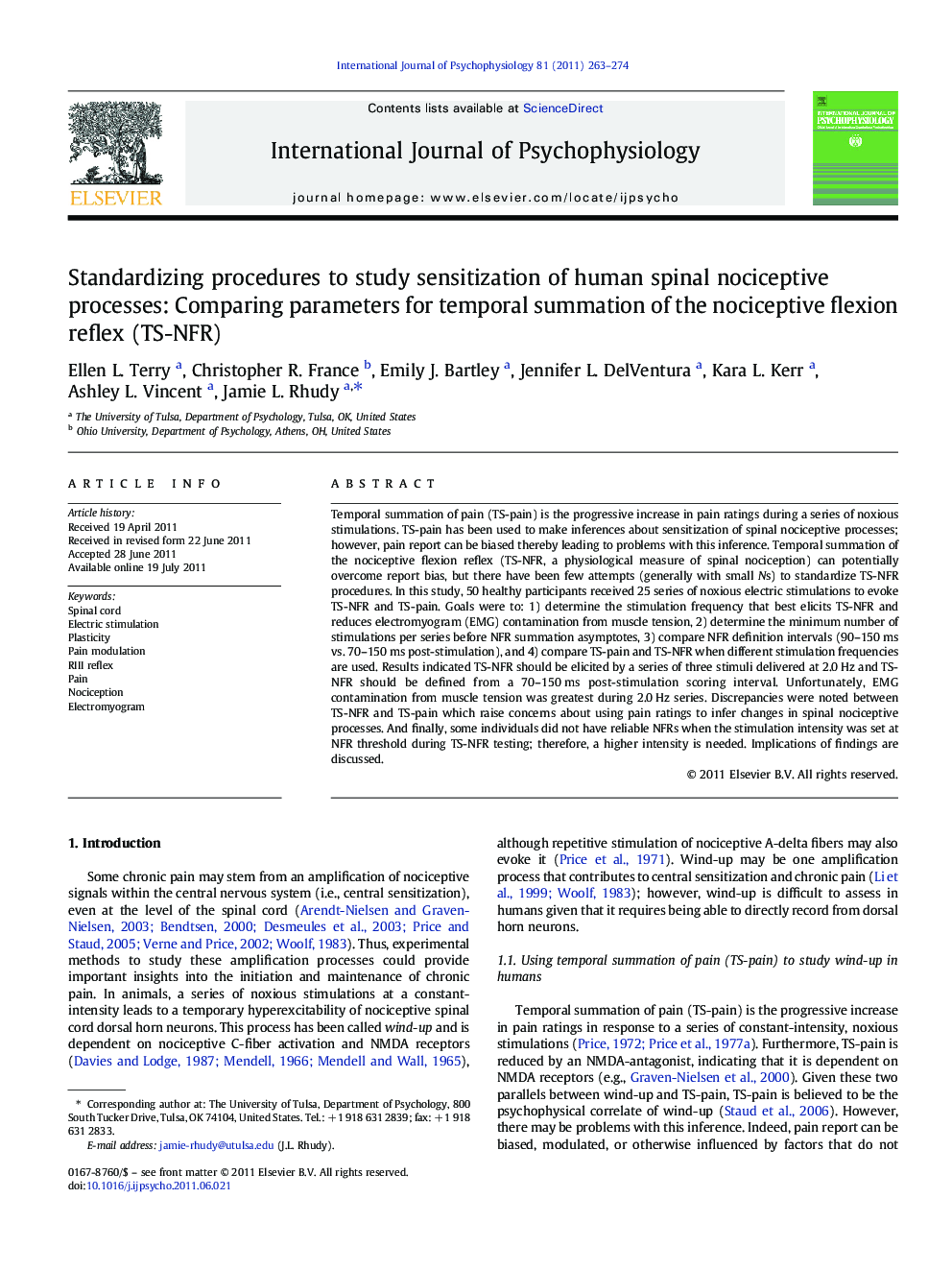| Article ID | Journal | Published Year | Pages | File Type |
|---|---|---|---|---|
| 930603 | International Journal of Psychophysiology | 2011 | 12 Pages |
Temporal summation of pain (TS-pain) is the progressive increase in pain ratings during a series of noxious stimulations. TS-pain has been used to make inferences about sensitization of spinal nociceptive processes; however, pain report can be biased thereby leading to problems with this inference. Temporal summation of the nociceptive flexion reflex (TS-NFR, a physiological measure of spinal nociception) can potentially overcome report bias, but there have been few attempts (generally with small Ns) to standardize TS-NFR procedures. In this study, 50 healthy participants received 25 series of noxious electric stimulations to evoke TS-NFR and TS-pain. Goals were to: 1) determine the stimulation frequency that best elicits TS-NFR and reduces electromyogram (EMG) contamination from muscle tension, 2) determine the minimum number of stimulations per series before NFR summation asymptotes, 3) compare NFR definition intervals (90–150 ms vs. 70–150 ms post-stimulation), and 4) compare TS-pain and TS-NFR when different stimulation frequencies are used. Results indicated TS-NFR should be elicited by a series of three stimuli delivered at 2.0 Hz and TS-NFR should be defined from a 70–150 ms post-stimulation scoring interval. Unfortunately, EMG contamination from muscle tension was greatest during 2.0 Hz series. Discrepancies were noted between TS-NFR and TS-pain which raise concerns about using pain ratings to infer changes in spinal nociceptive processes. And finally, some individuals did not have reliable NFRs when the stimulation intensity was set at NFR threshold during TS-NFR testing; therefore, a higher intensity is needed. Implications of findings are discussed.
► Procedures for studying spinal sensitization (via NFR) were tested and compared. ► Spinal sensitization can be elicited from 3 noxious stimulations at 2 Hz. ► However, muscle tension during 2 Hz series may contaminate NFR-related EMG. ► NFRs in this procedure should be assessed 70–150 ms post-stimulation. ► Using pain ratings to infer spinal sensitization can be problematic.
